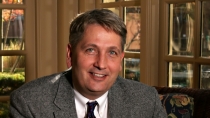Attachment, Parenting and Childhood Mental Illnesses
Mother’s Day celebrations bring to mind the centrality of attachment as an important topic for anyone studying human emotion. At NAMI, the National Alliance on Mental Illness, I see many families who come to us seeking help for a child or adolescent who has a mental illness such as depression, bipolar disorder or severe Attention Deficit Hyperactivity Disorder. In my experience, the attachment created by the mother is typically quite strong , and that gift is usually quite evident – even as the challenges inherent to trying to find out what is going on and how to get help can be overwhelming and daunting. Indeed, if healthy attachment was created, it is that foundation of security and trust that will the child through the many challenges that await.
A key concern that mothers and fathers often have inherent to their questions is about how much of this problem is their fault. This is quite loaded question for parents and professionals alike. Most people don’t know that the history of NAMI is rooted in this very question. In the 1950s, 60, and 70s, psychoanalytic theory was dominating the mental health field, and one extension of that theory was to blame mothers for most everything. Psychoanalysts—male and female—laid most of the cause of psychiatric conditions at the feet of cold or “refrigerator” mothers. Unsecure attachment and connection was the theoretical driver for the problem. This was most prominently done for mothers of children who had developed schizophrenia.
These mothers were then living with the heartache of a severe and persistent mental illness in their child—and the compounding blame for the problem from the professionals. They joined together, founded NAMI and correctly assessed that it could not be this simple—for instance, many of the families had many healthy children in addition to a child with schizophrenia. This theory didn’t fit their experience, and the blame had many negative effects on mothers and on their perception of the mental health field.
Further fueled by public stigma, a woefully inadequate mental health care system and scientific ignorance about mental illness, they set into motion a national movement that thrives today. This amazing story of NAMI’s grassroots and a group of mothers’ courageous battle against medicine’s misunderstanding of schizophrenia is the subject of a PBS documentary, When Medicine Got It Wrong, premiering in selected communities across the country beginning on Mother’s Day and continuing throughout the remainder of the year. The film shows the origins of the dramatic grassroots movement that resulted in NAMI’s founding in 1979 and helped revolutionize treatment and to promote understanding, ignite scientific research and began to change the way America understands mental illness.
The medical field now is happily more honest about how much we do not know about the causes of these conditions, that is likely influenced by unknown combinations of genetic vulnerability and broadly-defined environmental stresses (viruses in pregnancy, birth injury, psychological stress) are probably key elements. But we now have a refreshing humility that there is so much more to learn.
Parents also want to know if childhood mental illnesses are real. This is also challenging but for different reasons. We all have had the experience of having an intense mood state change over time and think of hard moments in our own childhood. No one wants to think of children as having psychiatric problems, and most would understandably like to wait for kids to grow out of it.
According to the U.S. Surgeon General, 1 in 5 American children and adolescents live with mental illnesses and nearly 5 million contend with a serious mental disorder that significantly interferes with daily functioning.
Caring for a child with a mental illness can be overwhelming and often strains marriages and family relationships. Children with serious mental illnesses may struggle in school, threaten violence to themselves or others or get caught in the juvenile justice or criminal justice systems. Most children with mental illness respond to standard treatments and interventions and experience relief from their symptoms; for some families, recovery can be a greater challenge. Meanwhile caregivers often experience frustration, guilt or anxiety as they struggle to find help for their child.
I am sympathetic to the human impulse to question the reality of childhood mental illness. Yet I also know that the largest studies of psychiatric epidemiology show that half of all mental disorders start by age 14, and three quarters by age 24. (Kessler National Co-Morbidity Study Archives General Psychiatry 2005) I have also seen in my practice that kids who live with psychiatric conditions are not defined by them—they have real strengths and gifts that can be forgotten in the storm of a psychiatric presentation. I also have noticed that kids have a tremendous capacity for health—they often improve, sometimes dramatically with the right package of help. And it is the love, trust and security created by the parents – the attachment that my field had formerly so pathologized – that often makes all the difference for them.
Ken Duckworth, M.D., Medical Director
Ken Duckworth, M.D. serves as the medical director for NAMI, the National Alliance on Mental Illness. He is triple board certified by the American Board of Psychiatry and Neurology in Adult, Child and Adolescent and Forensic Psychiatry and has extensive experience in the public health arena. He is also a family member of a person living with mental illness.

Ken Duckworth, M.D. Bio
Ken Duckworth, M.D. serves as the medical director for NAMI, the National Alliance on Mental Illness.
Learn More